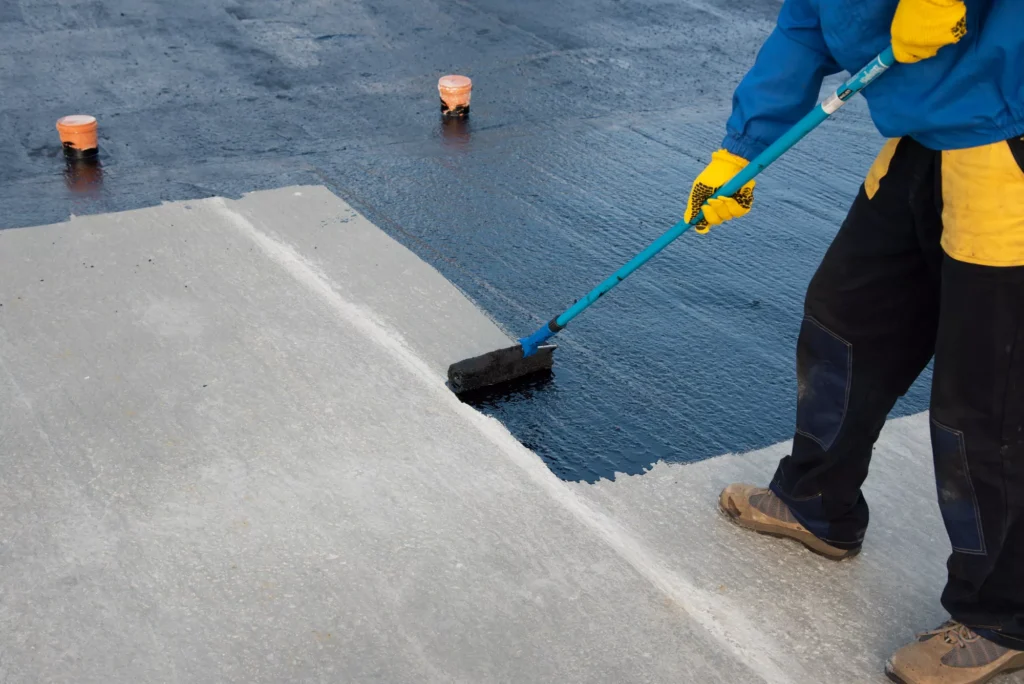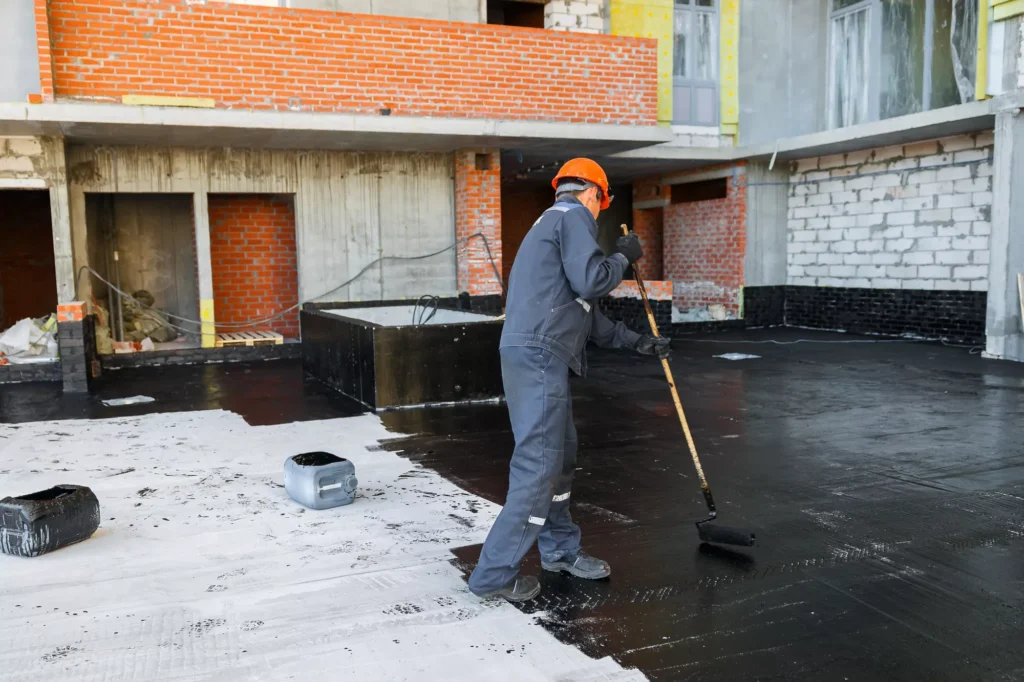Fluid-Applied Waterproofing for Effective Water Management
From shifting ground to mold, water is the cause of countless problems with building foundations and structures. It’s imperative to find a waterproofing strategy to mitigate these risks. However, many conventional waterproofing methods often come with their own set of challenges and limitations. This is where fluid-applied waterproofing is an idea application.
Fluid-applied waterproofing is easy to apply and cures quickly, making it an excellent choice for contractors working with tight deadlines. Here we outline the distinct advantages that fluid-applied waterproofing brings to the table, redefining how we protect building structures and contribute to a more sustainable built environment.
Understanding Fluid-Applied Waterproofing
Fluid-applied waterproofing refers to a construction technique wherein a liquid or semi-liquid substance is applied onto surfaces to create a seamless and impermeable barrier against water and moisture infiltration. Once cured, it becomes a rubbery material that seals to the foundation, functioning as an impermeable membrane that keeps water from damaging the structure.

The unique fluid application offers several advantages. It’s easy to apply and quick to cure, saving contractors both time and money. It also does not require a primer, as it bonds effectively to various substrates. Starting with a well-cleaned surface is enough preparation for a smooth application.
Fluid-applied waterproofing comes in sprayable and self-leveling options suitable for both horizontal and vertical applications. When applied to a 60mm thickness, it will cure to 30mm, adding negligible height to flooring or roof structures.
This technique is particularly well-suited for foundations, between-slab applications, roofs, and both above- and below-ground levels. Consider fluid-applied waterproofing for any new construction project where water exposure might be an issue. This goes for foundations greater than three feet below grade, especially when the property has a high water table or excessive drainage from the roof. It can be used on fresh or existing concrete, lightweight and structural concrete, as well as wood, well-bonded vinyl, or ceramic tile surfaces. Moreover, it can be applied on interior porous substrates, further showcasing its adaptability.
Benefits of Fluid-Applied Waterproofing
Modern fluid-applied waterproofing has revolutionized the way we manage water infiltration in construction. This innovative solution offers a superior moisture barrier and sealant, seamlessly adaptable to diverse substrates and structures. But what exactly makes it so effective?
Fluid-applied waterproofing is a liquid membrane sprayed or rolled onto surfaces, creating a continuous and monolithic layer. This offers distinct advantages over traditional sheet membranes, especially when dealing with undulating or flawed substrates.
For instance, fluid-applied waterproofing effectively fills the small cracks and voids in concrete surfaces, ensuring a truly seamless protective barrier. Unlike traditional methods that may require intricate origami-like techniques to waterproof complex structures, these solutions provide a simplified, single-component approach.

Fluid-applied waterproofing maintains its structural integrity regardless of temperature fluctuations. The fast curing process, devoid of solvents, accelerates project timelines while ensuring a secure bond to surfaces like asphalt and green concrete. The ability to perform under extreme conditions—such as up to 100% relative humidity and pH levels as high as 14—only further underscores the effectiveness and flexibility of fluid-applied waterproofing.
Additionally, fluid-applied methods don’t have blistering due to solvent outgassing, which means the finish is durable and smooth. The absence of shrinkage ensures a continuous and reliable barrier; the waterproofing layer remains flexible when cured. Even if cracks form in the concrete foundation, the waterproof layer stays intact, flexing over any imperfections.
Sustainable and Environmentally Friendly Aspects
Whether applied to roofs, foundations, or other essential structures, fluid-applied waterproofing serves as a seamless and reliable defense against moisture infiltration, mitigating the necessity for extensive repairs and safeguarding the long-term integrity of the built environment. This inherently contributes to the building’s overall sustainability in a range of ways.
Fluid-applied waterproofing acts as an additional safeguard for the structural elements of a building. The degradation caused by water infiltration often leads to extensive renovations or even complete rebuilds. But effectively preserving the longevity of structures through robust waterproofing diminishes the need for more resources and energy use. This reduction in the frequency of repairs or replacements, in turn, minimizes the building’s overall environmental impact.
Traditional waterproofing solutions may involve solvent-based formulations, which can contribute to air pollution and pose health risks to both workers in and occupants of the building. In contrast, solvent-free alternatives significantly decrease volatile organic compounds (VOC) emissions and potential indoor air quality concerns. This shift towards environmentally friendly options aligns with broader sustainability goals and healthier living environment.
An Effective and Reliable Waterproofing Solution
Fluid-applied waterproofing offers a comprehensive solution for moisture management. Its seamless nature, adaptability, and compatibility with diverse surfaces make it a compelling choice for enhancing the longevity and integrity of structures while streamlining the construction process. And by prolonging the life of structures and reducing the demand for repairs, it actively reduces the environmental strain associated with construction activities.
With decades of experience working across the Michigan, Ohio, Indiana and the greater Midwest, our teams understand commercial waterproofing solutions. From fluid-applied to sheet waterproofing, we can help your team identify and install the best option for your project. Reach out for a waterproofing estimate for your construction project.





